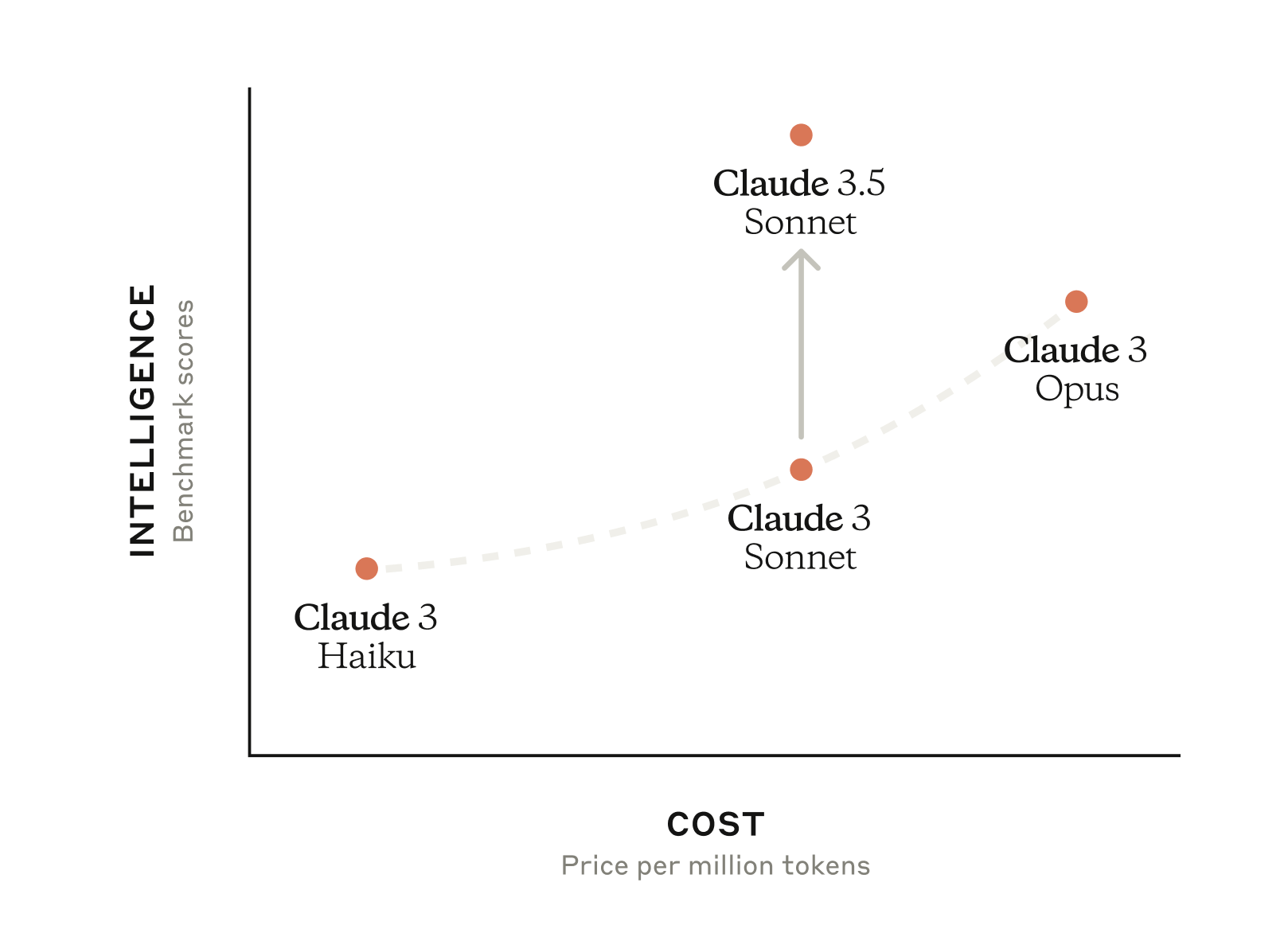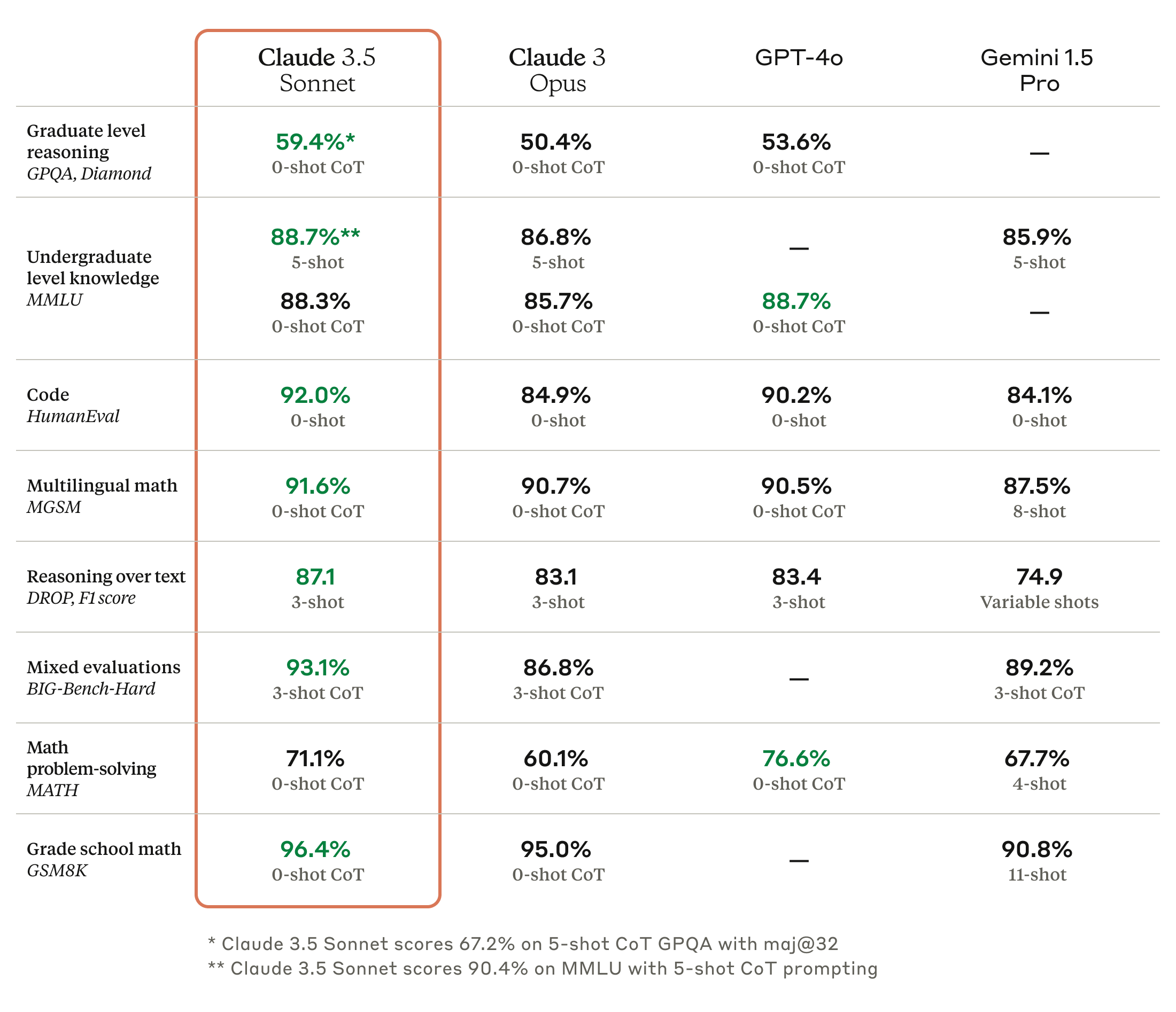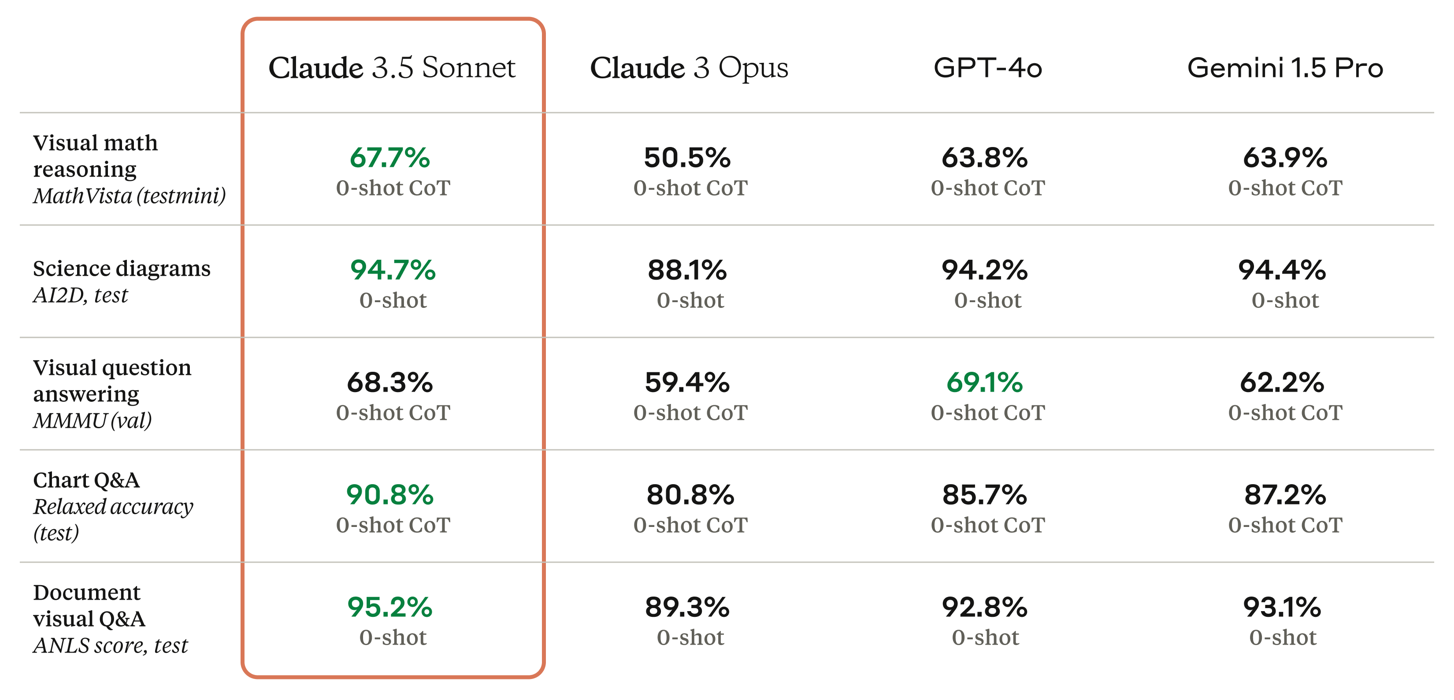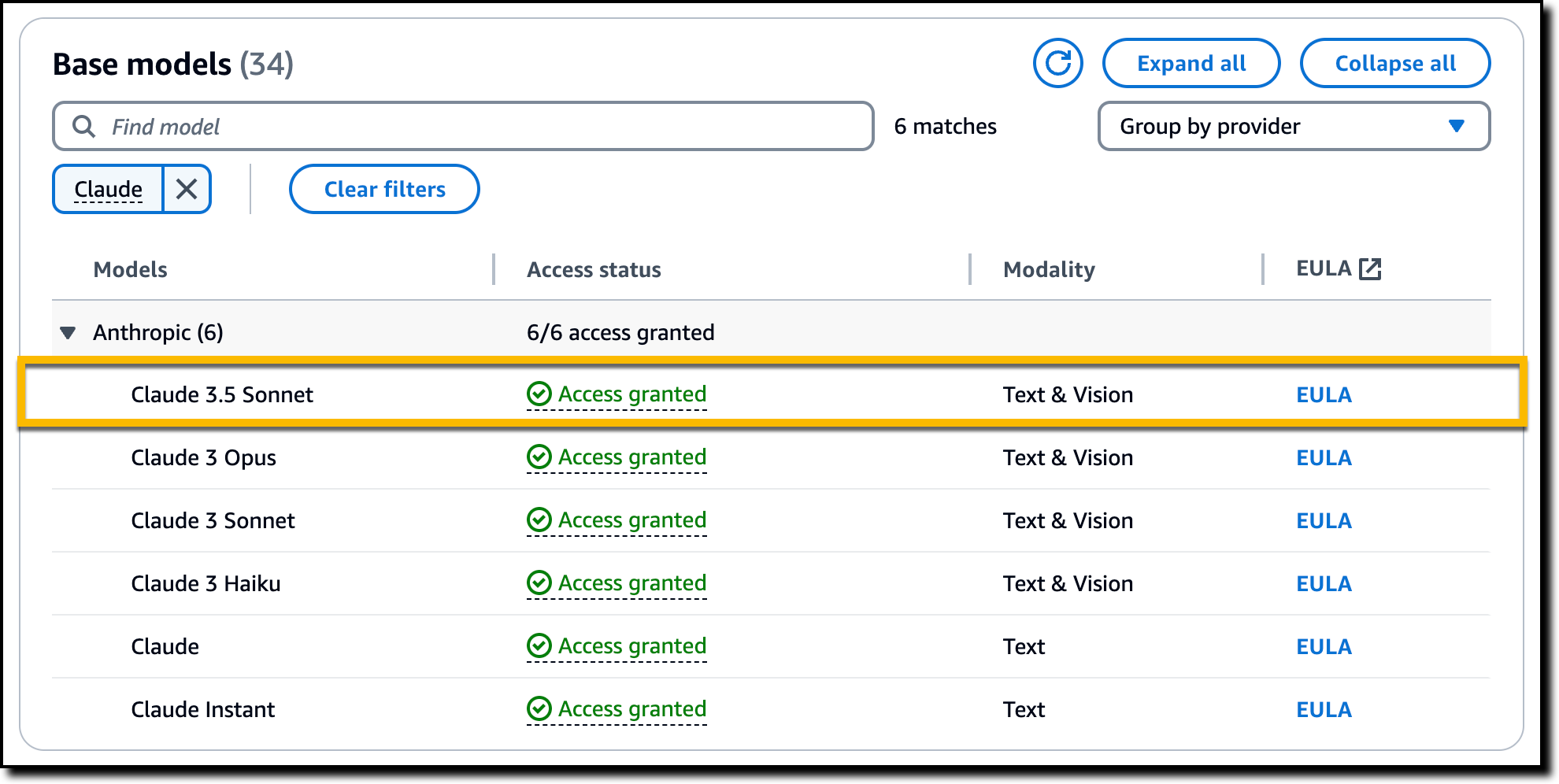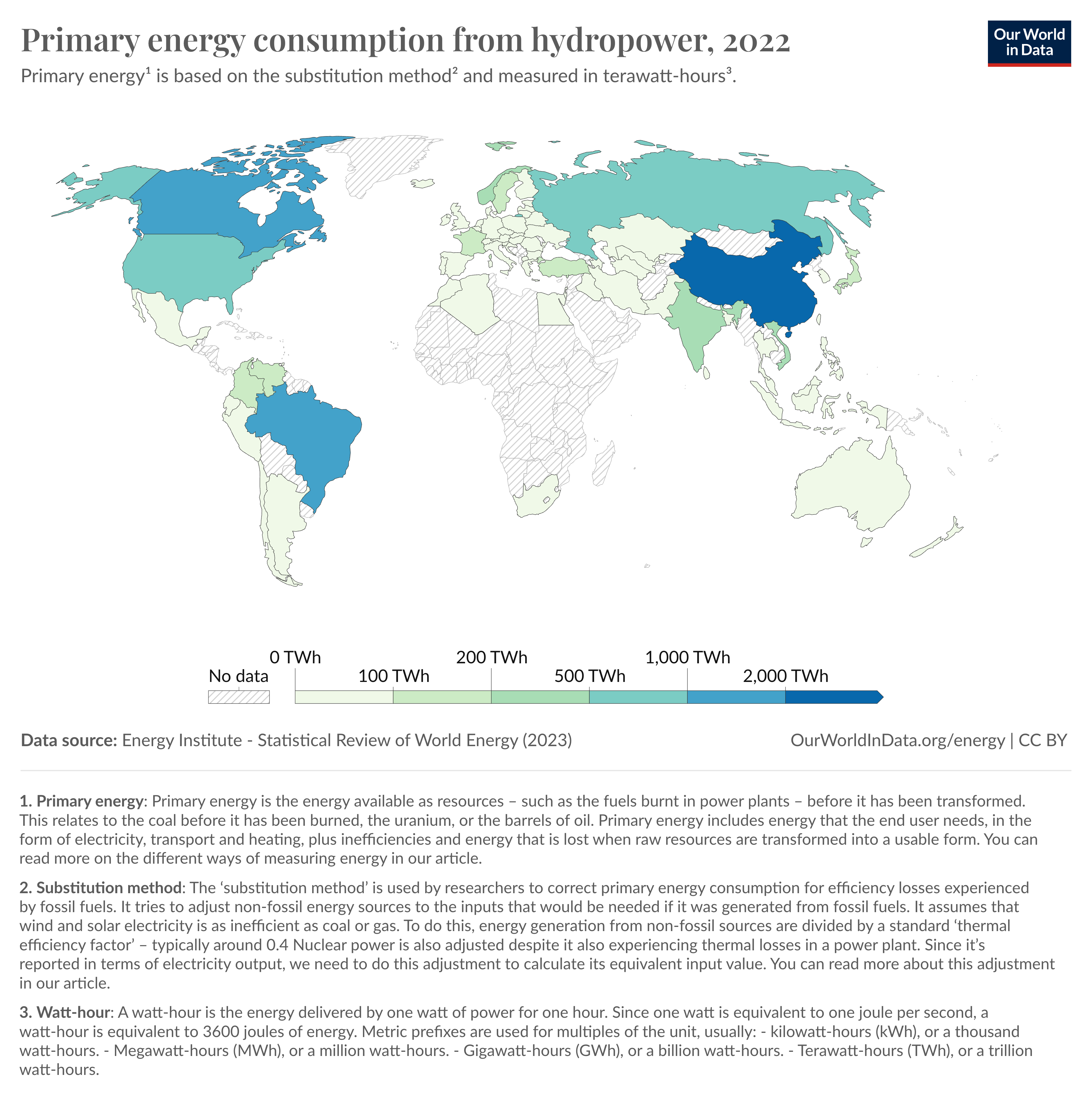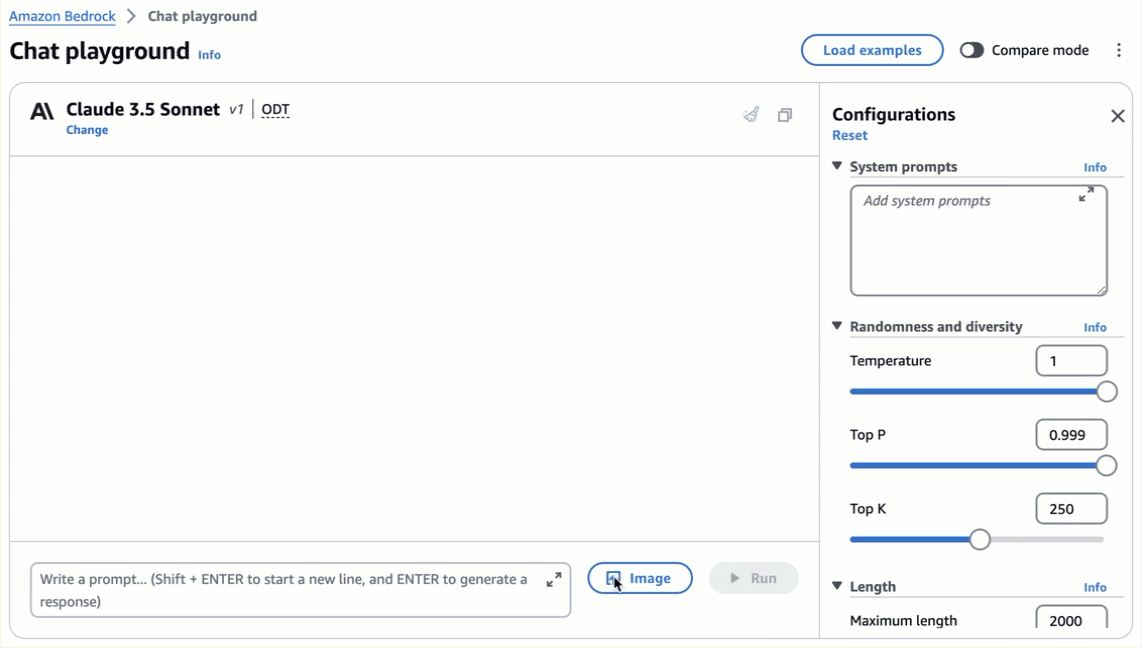It’s been just 3 months since Anthropic launched Claude 3, a family of state-of-the-art artificial intelligence (AI) models that allows you to choose the right combination of intelligence, speed, and cost that suits your needs.
Today, Anthropic introduced Claude 3.5 Sonnet, its first release in the forthcoming Claude 3.5 model family. We are happy to announce that Claude 3.5 Sonnet is now available in Amazon Bedrock.
Claude 3.5 Sonnet raises the industry bar for intelligence, outperforming other generative AI models on a wide range of evaluations, including Anthropic’s previously most intelligent model, Claude 3 Opus. Claude 3.5 Sonnet is available with the speed and cost of the original Claude 3 Sonnet model. In fact, you can now get intelligence and speed better than Claude 3 Opus at one-fifth of the price because Claude 3.5 Sonnet is 80 percent cheaper than Opus.
The frontier intelligence displayed by Claude 3.5 Sonnet combined with cost-effective pricing, makes the model ideal for complex tasks such as context-sensitive customer support, orchestrating multi-step workflows, and streamlining code translations.
Claude 3.5 Sonnet sets new industry benchmarks for undergraduate-level expert knowledge (MMLU), graduate-level expert reasoning (GPQA), code (HumanEval), and more. As you can see in the following table, according to Anthropic, Claude 3.5 Sonnet outperforms OpenAI’s GPT-4o and Google’s Gemini 1.5 Pro in nearly every benchmark.
Claude 3.5 Sonnet is also Anthropic’s strongest vision model yet, performing an average of 10 percent better than Claude 3 Opus across the majority of vision benchmarks. According to Anthropic, Claude 3.5 Sonnet also outperforms other generative AI models in nearly every category.
Anthropic’s Claude 3.5 Sonnet key improvements
The release of Claude 3.5 Sonnet brings significant improvements across multiple domains, empowering software developers and businesses with new generative AI-powered capabilities. Here are some of the key strengths of this new model:
Visual processing and understanding – Claude 3.5 Sonnet demonstrates remarkable capabilities in processing images, particularly in interpreting charts and graphs. It accurately transcribes text from imperfect images, a core capability for industries such as retail, logistics, and financial services, to gather more insights from graphics or illustrations than from text alone. Use Claude 3.5 Sonnet to automate visual data processing tasks, extract valuable information, and enhance data analysis pipelines.
Writing and content generation – Claude 3.5 Sonnet represents a significant leap in its ability to understand nuance and humor. The model produces high-quality written content with a more natural, human tone that feels more authentic and relatable. Use the model to generate engaging and compelling content, streamline your writing workflows, and enhance your storytelling capabilities.
Customer support and natural language processing – With its improved understanding of context and multistep workflow orchestration, Claude 3.5 Sonnet excels at handling intricate customer inquiries. This capability enables round-the-clock support, faster response times, and more natural-sounding interactions, ultimately leading to improved customer satisfaction. Use this model to automate and enhance customer support processes and provide a seamless experience for end users. For an example of a similar implementation, see how DoorDash built a generative AI self-service contact center solution using Anthropic’s Claude 3 models in Amazon Bedrock.
Analytics and insights – Claude 3.5 Sonnet augments human expertise in data science by effortlessly navigating unstructured data and using multiple tools to generate insights. It produces high-quality statistical visualizations and actionable predictions, ranging from business strategies to real-time product trends. Use Claude 3.5 Sonnet to simplify data analysis workflows, uncover valuable insights, and drive data-driven decision-making.
Coding and software development – Claude 3.5 Sonnet can independently write, edit, and execute code with sophisticated reasoning and troubleshooting capabilities when provided with the relevant tools. Use Claude 3.5 Sonnet to streamline developer workflows, accelerate coding tasks, reduce manual effort, and enhance overall productivity.
Using Anthropic’s Claude 3.5 Sonnet in the Amazon Bedrock console
Because this is a new model, I go to the Amazon Bedrock console and choose Model access from the navigation pane to enable access to Claude 3.5 Sonnet.
Now that I have access to the model, I’d like to use it to extract information from the following image from the Our World in Data website:
I choose Chat in the Playgrounds section of the navigation pane and select Anthropic and Claude 3.5 Sonnet as the model. I then choose the Image upload button to upload the previous image, type the following prompt, and choose Run:
Which countries consume more than 1000 TWh from hydropower? Think step by step and look at all regions. Output in JSON.
Here’s the result and an animated image recapping what I did.
The model’s ability to reliably extract information from unstructured data, like images, opens up a world of new possibilities.
I choose the three small dots in the corner of the playground window and then View API request to see code examples using the model in the AWS Command Line Interface (AWS CLI) and AWS SDKs. Let’s have a better look at the code syntax.
Using Claude 3.5 Sonnet with AWS SDKs
You can use Claude 3.5 Sonnet with any AWS SDK using the new Amazon Bedrock Converse API or Anthropic Claude Messages API.
To update code already using a Claude 3 model, I just need to replace the model ID with:
anthropic.claude-3-5-sonnet-20240620-v1:0
Here’s a sample implementation with the AWS SDK for Python (Boto3) using the same image as before to show how to use images and text with the Converse API.
import boto3
from botocore.exceptions import ClientError
MODEL_ID = "anthropic.claude-3-5-sonnet-20240620-v1:0"
IMAGE_NAME = "primary-energy-hydro.png"
bedrock_runtime = boto3.client("bedrock-runtime", region_name="us-east-1")
with open(IMAGE_NAME, "rb") as f:
image = f.read()
user_message = "Which countries consume more than 1000 TWh from hydropower? Think step by step and look at all regions. Output in JSON."
messages = [
{
"role": "user",
"content": [
{"image": {"format": "png", "source": {"bytes": image}}},
{"text": user_message},
],
}
]
response = bedrock_runtime.converse(
modelId=MODEL_ID,
messages=messages,
)
response_text = response["output"]["message"]["content"][0]["text"]
print(response_text)When I run it, I get a similar output as in the console:
Because I didn’t specify a JSON syntax, the two answers use a different format. In your applications, you can describe in the prompt the JSON properties you want or provide a sample to get a standard format in output.
For more examples, see the code samples in the Amazon Bedrock User Guide. For a more advanced use case, here’s a fully functional tool use demo illustrating how to connect a generative AI model with a custom tool or API.
Using Claude 3.5 Sonnet with the AWS CLI
There are times when nothing beats the speed of the command line. This is how you can use the AWS CLI with the new model:
In the output, I use the query option to only get the content of the output message:
[
{
"text": "Let's approach this step-by-step:nn1. First, we need to understand the relationships:n - Alice has N brothersn - Alice has M sistersnn2. Now, let's consider Alice's brother:n - He is one of Alice's N brothersn - He has the same parents as Alicenn3. This means that Alice's brother has:n - The same sisters as Alicen - One sister more than Alice (because Alice herself is his sister)nn4. Therefore, the number of sisters Alice's brother has is:n M + 1nn Where M is the number of sisters Alice has.nnSo, the answer is: Alice's brother has M + 1 sisters."
}
]I copy the text into a small Python program to see it printed on multiple lines:
print("Let's approach this step-by-step:nn1. First, we need to understand the relationships:n - Alice has N brothersn - Alice has M sistersnn2. Now, let's consider Alice's brother:n - He is one of Alice's N brothersn - He has the same parents as Alicenn3. This means that Alice's brother has:n - The same sisters as Alicen - One sister more than Alice (because Alice herself is his sister)nn4. Therefore, the number of sisters Alice's brother has is:n M + 1nn Where M is the number of sisters Alice has.nnSo, the answer is: Alice's brother has M + 1 sisters.")Even if this was a quite nuanced question, Claude 3.5 Sonnet got it right and described its reasoning step by step.
Things to know
Anthropic’s Claude 3.5 Sonnet is available in Amazon Bedrock today in the US East (N. Virginia) AWS Region. More information on Amazon Bedrock model support by Region is available in the documentation. View the Amazon Bedrock pricing page to determine the costs for your specific use case.
By providing access to a faster and more powerful model at a lower cost, Claude 3.5 Sonnet makes generative AI easier and more effective to use for many industries, such as:
Healthcare and life sciences – In the medical field, Claude 3.5 Sonnet shows promise in enhancing imaging analysis, acting as a diagnostic assistant for patient triage, and summarizing the latest research findings in an easy-to-digest format.
Financial services – The model can provide valuable assistance in identifying financial trends and creating personalized debt repayment plans tailored to clients’ unique situations.
Legal – Law firms can use the model to accelerate legal research by quickly surfacing relevant precedents and statutes. Additionally, the model can increase paralegal efficiency through contract analysis and assist with drafting standard legal documents.
Media and entertainment – The model can expedite research for journalists, support the creative process of scriptwriting and character development, and provide valuable audience sentiment analysis.
Technology – For software developers, Claude 3.5 Sonnet offers opportunities in rapid application prototyping, legacy code migration, innovative feature ideation, user experience optimization, and identification of friction points.
Education – Educators can use the model to streamline grant proposal writing, develop comprehensive curricula incorporating emerging trends, and receive research assistance through database queries and insight generation.
It’s an exciting time for for generative AI. To start using this new model, see the Anthropic Claude models section of the Amazon Bedrock User Guide. You can also visit our community.aws site to find deep-dive technical content and to discover how our Builder communities are using Amazon Bedrock in their solutions. Let me know what you do with these enhanced capabilities!
— Danilo


